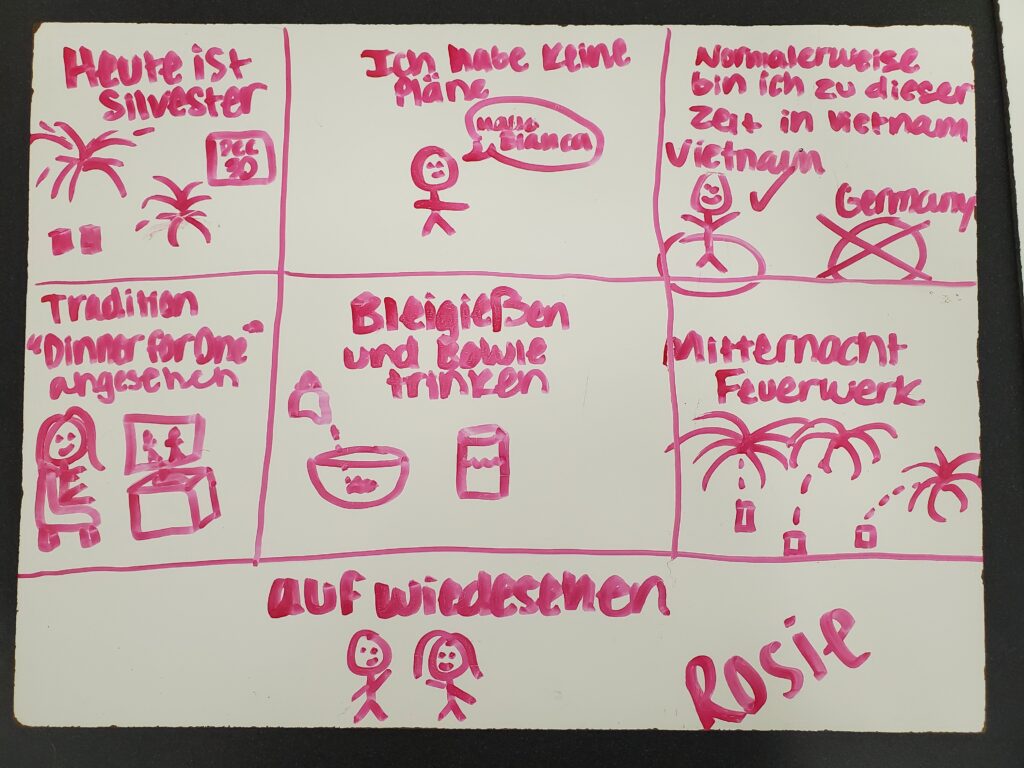Keywords (and Pictures)

Keywords (and Pictures)
Note: Please read the following two blog posts before this one:
This activity is a simple variation to “Read, Draw, and Discuss” and “Listen, Draw, and Discuss“. The short of it is, instead of using drawings during the activity, students use keywords (in the target language).
A small variation is to have them use both keywords and pictures. Students would have to draw a picture and label it with an appropriate keyword (in the target language). That is, each picture would be labeled with an appropriate keyword. Or, students could use a keyword when they preferred or a drawing when they preferred; it would be a random mix of both on the board.
In any case, this activity follows the same sequence / instructions as the other activities listed above at the beginning of the post.
Something to Consider: This activity or the other mentioned activities can also be done in a more independent manner. Instead of reading aloud to the students or having them listen to a story, simply give them a text/story and have them read it on their own. You can them have them draw / write keywords on their boards on their own as they read the story. (You can easily check their level of comprehension by having them show you their boards when they are finished.)
In Class:
1. Students had a whiteboard, marker, and rag/eraser.
2. We established meaning of our target structures and vocabulary.
- You can use any means you feel are appropriate and effective for establishing meaning, for example: TPR, PQAs, etc.
3. I explained that they would have to write keywords (or draw pictures and label them with an appropriate keyword) in the target language.
4. Then, we proceeded with either a reading/text or listening component.
- See the posts at the top of this post for appropriate steps on how you proceed.
5. I then had students show me their keywords (and drawings) by holding up their boards. I looked at their whiteboard and the keywords as a comprehension check.
6. (OPTION) Then, I told the class to show another person their whiteboard with keywords (and drawings) and retell – in German – the story.
- Note: I asked them to point to the keywords as they retold the story.
7. (OPTION) Then, we repeated step 7 a couple of times with different partners. (The students enjoyed sharing their work and seeing the work of others.)
8. I also wrote (and drew) on a whiteboard. After steps 6 & 7 – if you chose to do a student retell – I held mine up and retold the story using my keywords. We then discussed the story using our boards.
- Note: I encourage you to still do this step in any case, even if you do not do steps 6 & 7.
9. I offered any students the chance to come up in front of the class and retell the story using the keywords on their board. (I don’t force students to do this!)
Reflections:
As with the other activities, my students enjoy this one also. My reflections are similar to the one’s I had with the other activities, but with one small difference. My students seem just a bit more confident when they do a retell using the keywords. I am not 100% sure why this is the case, but my guess is that the keywords make a succinct summary/outline of the story (in words). So, when the students do a retell, it may have more of a feeling like they are reading the story out loud. Again, that is just my hunch and is not back by any formal research.
Note: Below are pictures from my students with their details. The text was set up as an email to a friend:
Isabella is an exchange student staying with a host family in Sassnitz, Germany. Sassnitz is a city on the island of Rügen. She writes her friend Hannah and tells her about the activities she is doing and the places she visits. This includes going to the beach (getting a “Strandkorb”), swimming, and windsurfing. It also includes going to see the famous chalk cliffs of Rügen and going to the famous pier – the Seebrücke.
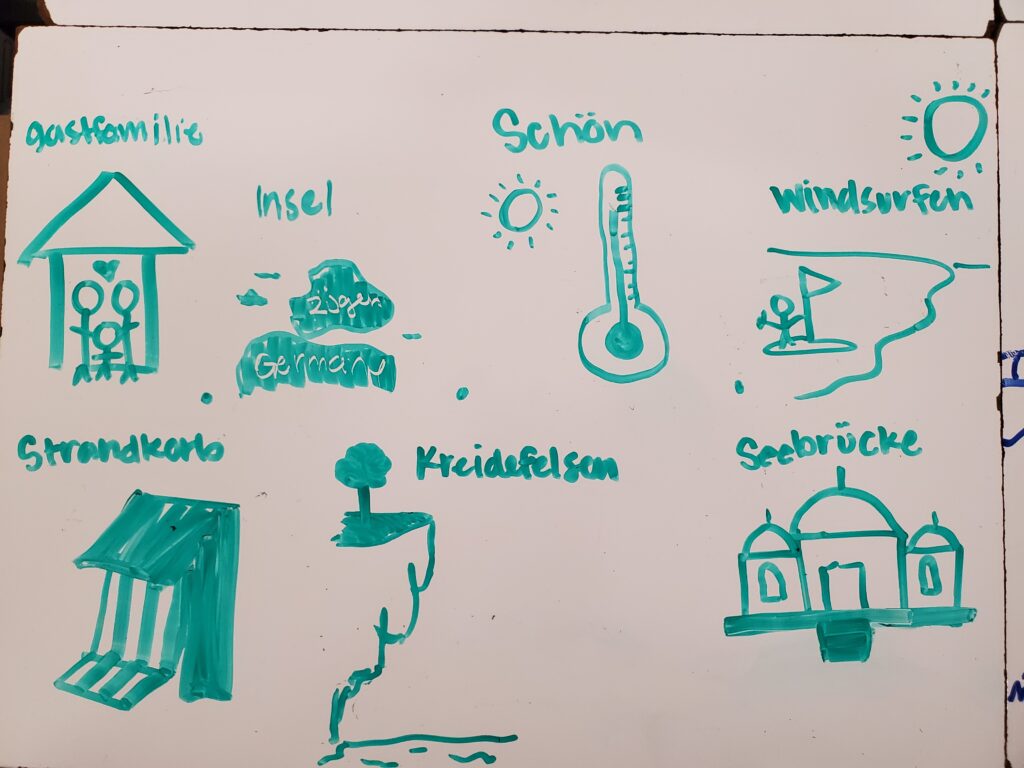
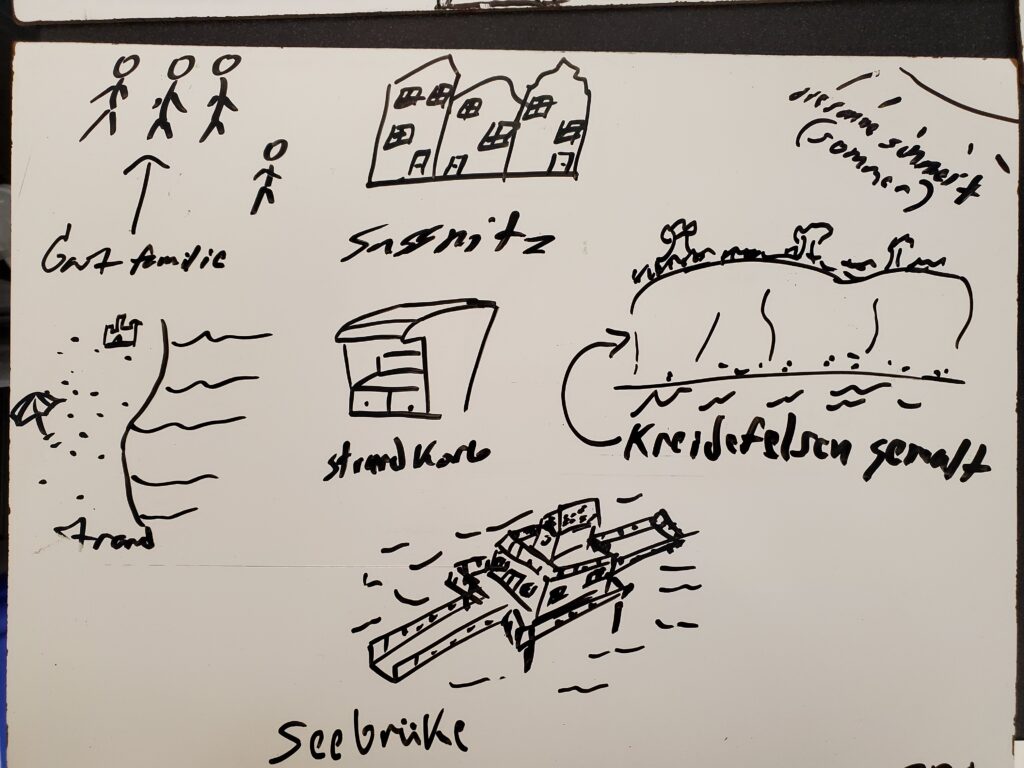
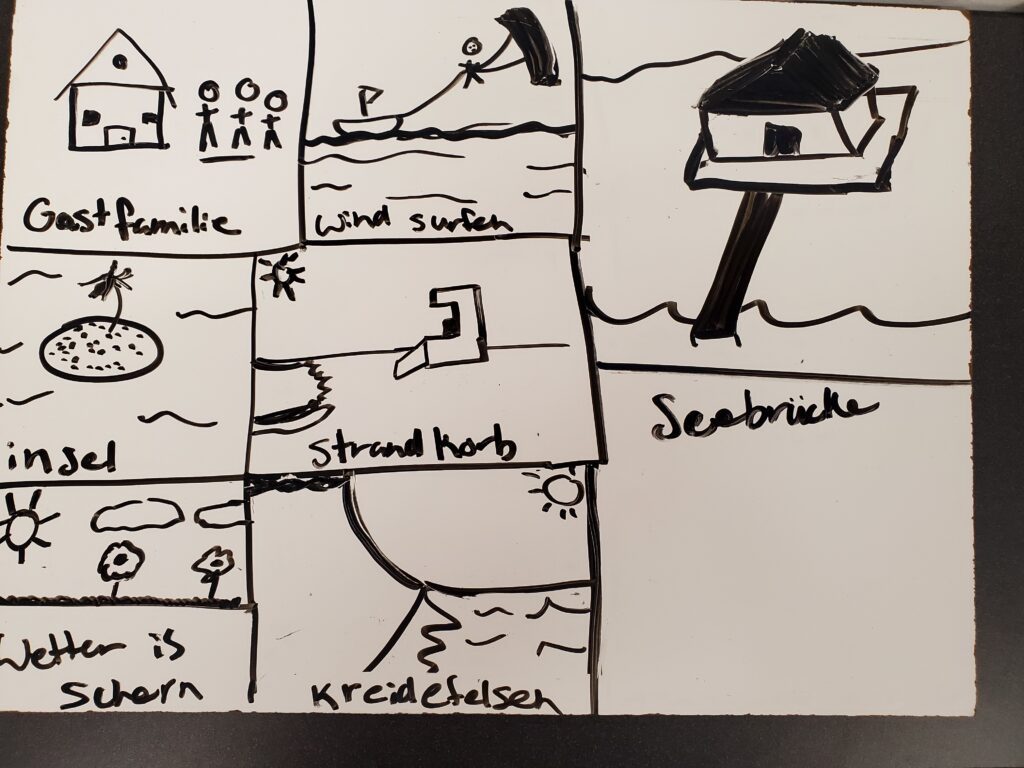
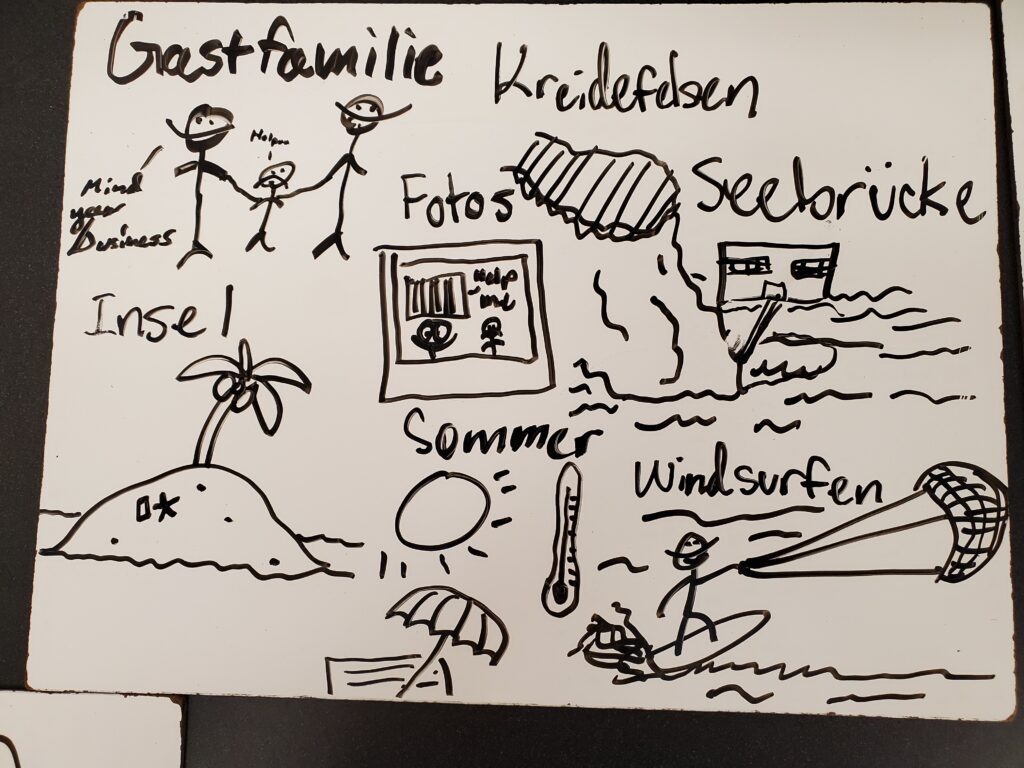
Note: In the following pictures, one of the student chose to also incorporate short sentences. That is okay! There is no problem with it! The student showed her comprehension of the story!
The text was set up as an text message exchange between friends about plans for New Year’s Eve:
One of the the friends, Dinh, is usually in Vietnam for New Year’s Eve, so he is unfamiliar with the traditions surrounding the celebration in Germany. His German friend makes plans for them and tells Dinh what they are going to do on that evening. This includes, making dinner, watching a show, going to a party and watching fireworks.
